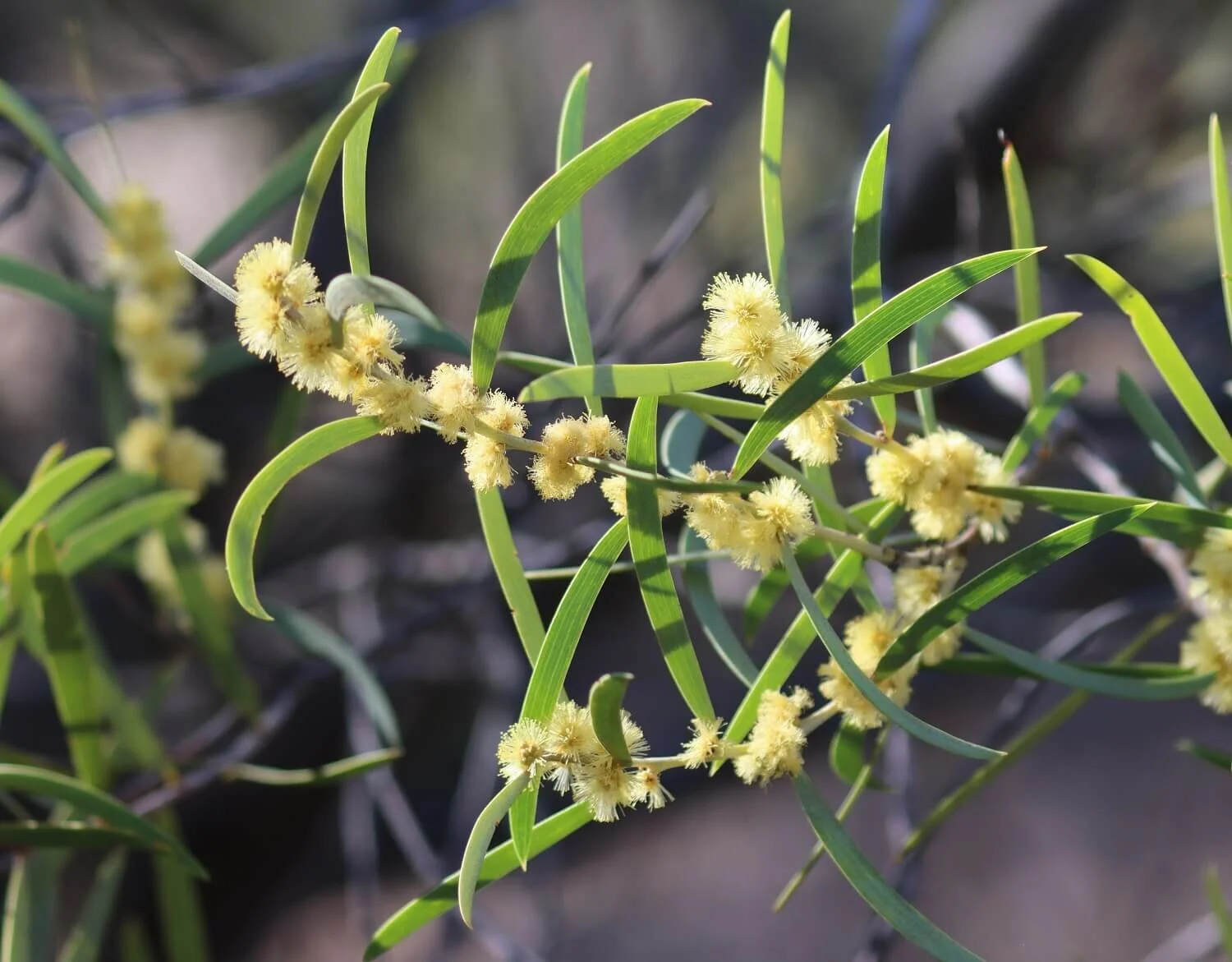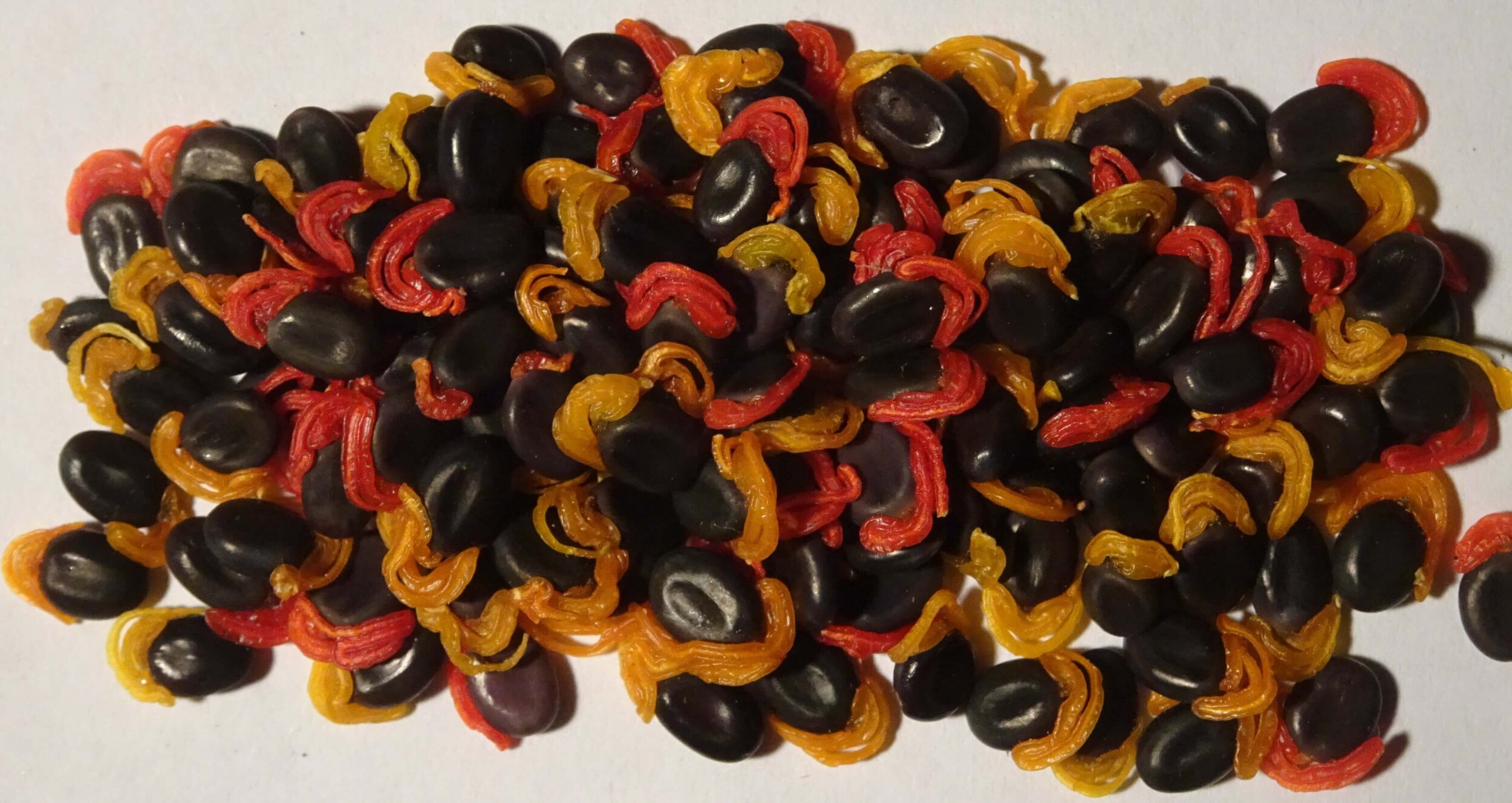Vegetation communities on Raakajlim
One of the greatest attractions of Raakajlim is that it show-cases many of the key vegetation communities of north-west Victoria over a small area.

Riverine woodlands
Raakajlim Creek runs the length of the property, connecting the Dry Lakes system with the main Chalka Creek anabranch of the Murray River, both within Hattah Kulkyne National Park. The creek is lined with Black Box (Eucalyptus largiflorens) and Chenopods (saltbush and bluebush) and supplies areas of Lake Bed Herbland (heavier clay communities adapted to wetting and drying, characterised by gilgais and deep-cracks).

Semi-arid woodlands
This is our most significant vegetation community and is threatened in Victoria. Slender Cypress Pine (Callitris gracilis) dominates; this species was once widely felled throughout the Mallee for buildings, fence posts and firewood.
We have good natural regeneration of Pine in some areas, but other areas need revegetation via direct-seeding and hand-planting. The cover and diversity of native grasses has increased exponentially over the last fifteen years. Unusually, we also have both Casuarinas: Buloke at the northern end of its range and Belah at the southern end of its range.

Mallee woodlands
We have a central 50-hectare patch of Mallee woodland (Woorinen Mallee and Loamy Sands Mallee) which is connected to more extensive Mallee woodlands in the Park. Our restoration works here focus on habitat for threatened Mallee birds. Malleefowl have been observed here in the past and we hope they will return in time.
Like in Hattah Kulkyne National Park, some areas of Raakajlim are now mobile sand dunes, a legacy of past land use. Our focus here is stabilising the dunes.
What’s in flower: Plants
The root systems of plants in the Mallee include underground storage organs. The cultural and ecological importance of these is extraordinary.
A World Wetland Day shout out to all the Wetland Ecologists out there. Thank you!
The 2022 tree-planting extravaganza with Carey Baptist Grammar. Where did the trees come from and what will they become?
A rare plant called Boerhavia coccinea, the food plant for the Striped Hawk Moth caterpillar Yeperenye.
Flowering at night, a mystery, native bee pollinator and special twists to keep the flowers closed. Weird indeed.
At this time of year, the Hopbush is looking spectacular. I have mixed feelings about this shrub though. On one hand, it hosts lots of cool insects and birds and is useful for erosion control. But it can be invasive, encroaching and then dominating vegetation communities.
This is Austral Bugle (Ajuga australis). Plants from Raakajlim will contribute to understanding the taxonomy of this species. But it looks like the Mallee plants are the grandest of them all!
Sandhill Wattle is a major component of our revegetation program. But it is also a bit of a rock star with many unique characters.
The Poached Egg Daisies were spectacular in Spring 2020, but they’ve finished now and the white fluff is everywhere.
This rare, slow-growing wattle is long-lived and can grow to an immense size.
The Zebra Finches are here in numbers which means the Porcupine Grass seed is ripe. Porcupine Grass (Triodia scariosa), sometimes called Spinifex, has an interesting story …
Our 12 month trial of scalping to restore a semi-arid grassland.
Not a South African Weed Orchid, not an agricultural pest, but the rare Australian Broomrape.
The Murnong are flowering in the Mallee. It’s going to be a great year for Yam Daisies!
Year after year, the Wattle have their own, consistent rhythm for flowering … and seed collection.
Now’s the time to sow seed of native Pine (Callitris gracilis) so the tubestock will be ready to plant out in Autumn.
I wish this was the intriguing Insect Egg Slime Mould, but it’s not … it’s Dog Vomit Slime Mould. Yuk.
























